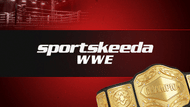
For those who are unfamiliar with it, Mount Rushmore is a monument in South Dakota in the USA. On it are the visages of four former presidents of the country carved into the side of a mountain. Among the presidents are George Washington, the first president of the US and Abraham Lincoln, the man who was president during the Civil War in the United States and who helped to free those in bondage.
Also among the faces atop the mountain are Thomas Jefferson, the third president and framer of the US Declaration of Independence and Teddy Roosevelt, who was president at the start of the 1900s. He started the 'Conservation Movement' in the US to save the country's natural resources, including animals, forests, plants and other resources.
All four men had enormous impacts on the shaping of the USA and because of their contributions, they were all immortalized on the Mount Rushmore Monument as seen below.
10 WWE Stars Who Are Now Banned - Find Out Now!
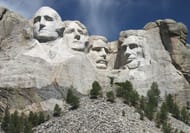
Any time a select group of people is credited for creating something or being at the top of their fields, those front-runners are sometimes referred to as that field's 'Mount Rushmore.' In terms of the wrestling world and the WWF/WWE, the 1980s was the decade that professional wrestling truly became a part of mainstream culture.
It had its biggest show annually in WrestleMania and it often attracted various other celebrities who were big at the time, including Cyndi Lauper, Mr. T, Alice Cooper and even Donald Trump.
Since the '80s brought wrestling into the forefront of society, there are certainly particular superstars who were big parts of helping that process. Although the actual Mount Rushmore only has four faces, I would include the five following superstars in a Mount Rushmore of the WWF/WWE from the 1980s.
#5 'Rowdy' Roddy Piper
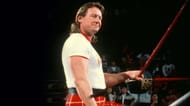
Although Piper failed to capture the WWF World Heavyweight Title during his various runs in the company, his persona was so larger than life that it helped make him one of the most memorable superstars in the history of the business.
Before he became a beloved face in the WWF, Piper was instrumental in the early stages of the WWF becoming something that was acceptable in mainstream culture. At the first WrestleMania in 1985, he partnered with Paul Orndorff to oppose the duo of Hulk Hogan and Mr. T in the main event.
It was the spectacle's biggest match to date at the time as both Mr. T and Hogan had also appeared in the Rocky movie franchise in Rocky III. It was one of the first signs of wrestling spilling into the mainstream culture and is something that has continued until this day.
Piper was also featured in one of the main events of WrestleMania II when he challenged Mr. T to a boxing match. If Piper wasn't so important to the company in the early stages of 'Mania, then he wouldn't have had a part in its first two main events.
He became even more beloved due to his promo ability and face run in the late '80s and early 1990s. For anyone looking to improve their promo skills, they should definitely consider watching old tape of Piper's.
#4 'Macho Man' Randy Savage
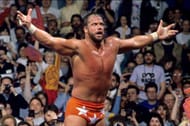
The chances are that a lot of people who watched the WWF and wrestling in the 1980s would likely list Savage vs. Ricky Steamboat at WrestleMania III as one of the best matches of all time. Savage was so instrumental both in the ring and on the mic that their match for the Intercontinental Championship would foreshadow Savage's ascension up the card.
While Piper failed to capture the WWF World Heavyweight Championship, Savage won it during a pivotal moment in the company's tenure. In the finals of a tournament to crown a new champion at WrestleMania IV, Savage defeated 'the Million Dollar Man' Ted DiBiase for the vacant title.
It propelled him to superstar status and would soon push him into one of the greatest storylines in wrestling history when he would enter into a year-long program with Hulk Hogan. Throughout 1988, the tension between Hogan and Savage, the Mega Powers, grew with each passing month. They tagged together at SummerSlam of that year in the main event against Andre the Giant and DiBiase.
Even though they won, the tension only increased monthly and the feud culminated with the two squaring off in the main event of WrestleMania V in 1989. Savage's direction after losing to Hogan in 1989 also set forward one of the best storylines in history as he turned to the dark side and shunned Miss Elizabeth.
His whole descent into an arrogant heel was done to perfection and it was even more satisfying when he eventually reconciled with Elizabeth later in the storyline. Without Savage and his meticulous planning of matches, those masterpieces against Ricky Steamboat and Hogan wouldn't be as iconic as they truly are.
#3 The Ultimate Warrior
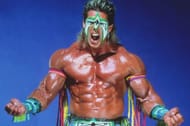
From his rambling promos and energetic machinations, the chances are The Ultimate Warrior is one of the most memorable superstars from the 1980s and 1990s to most fans. His sprint down the ring was usually followed by either a quick match or a pivotal moment in wrestling history.
His 'Super Pose-down' with Rick Rude was one of the best non-wrestling segments in the history of wrestling and his squash of the longest reigning IC Champ, the Honky Tonk Man, was a match that cemented that he was on to bigger and better things.
The Ultimate Warrior became so popular in the late '80s that he started to rival the popularity of the first true superstar in the WWF in Hulk Hogan. Mr. McMahon capitalized on that by pairing the two champions against each other in the main event of WrestleMania VI.
The man was also a poster child for the jacked physiques of the decade. It was a huge part of his character's mystique and some people even thought that someone else was portraying the man under the face paint when he returned from a brief hiatus from the ring.
It was the same man behind the paint, and his infectious energy was something that not any normal person could pull off. Warrior's late '80s career was the perfect example of gauging the popularity of a new young star in order to see if he or she could become a huge main-event star. He was a prime example of a newer star rivaling the popularity of the biggest star in the company and he actually had me cheering for him against Hogan.
#2 Andre the Giant
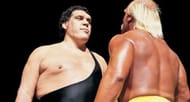
Andre the Giant was such a mountain of a man that merely body-slamming him is one of the most iconic moments in the history of professional wrestling. Not only was Andre a big attraction similar to how a carnival promotes certain acts, but he was also a huge star because of his size and what beating him would do for someone's career.
Think of body-slamming him or beating him in a match as somewhat similar to what the Undertaker's WrestleMania streak became. It was a worthy challenge for everyone until it was eventually conquered by Brock Lesnar.
Andre wasn't the most mobile person in the ring, but he was a big part of helping to popularize the sport. The main heroes and faces in the company needed a literal giant to slay and overcome, and Andre was more than happy to oblige.
Just as superstars who have impressive, chiseled physiques are important to the sport, so are the huge men and women who represent literal obstacles to the conquering heroes. Andre was one of the first monstrous obstacles to be popularized in the mainstream, and his impact on the sport can be seen with the battle royal at WrestleMania named after him.
#1 Hulk Hogan
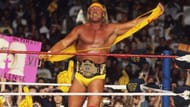
Hulk Hogan was the first megastar in the professional wrestling business. Sure, Bruno Sammartino was a huge star in the late 1960s and 1970s, but the sport hadn't captured the hearts of mainstream society at that time.
During the advent of MTV and music television, wrestling also adopted that platform with the likes of Captain Lou Albano appearing in music videos and wrestlers appearing in films. Hogan appeared in Rocky III and even had his own Saturday morning cartoon in the '80s. Since Hogan was the biggest star of the decade, and arguably all time, he is often credited as the greatest superstar of all time.
Hogan's impact on the business was enormous in the 1980s as he took part in four of the main events of the first five WrestleManias. He routinely held the title as the company's biggest star and more than likely was the wrestler most non-fans would have been able to recognize.
'The Hulkster' was also presented as a 'Real American Hero' during the closing days of the Cold War between the US and the USSR. He not only became a sports icon but also a cultural one as the most recognizable wrestler in the world. Had he not been a pro wrestler, who knows how different things would have turned out for him and the sport's many fans.
Make Sportskeeda your preferred choice for WWE content by clicking here: Source preferences

